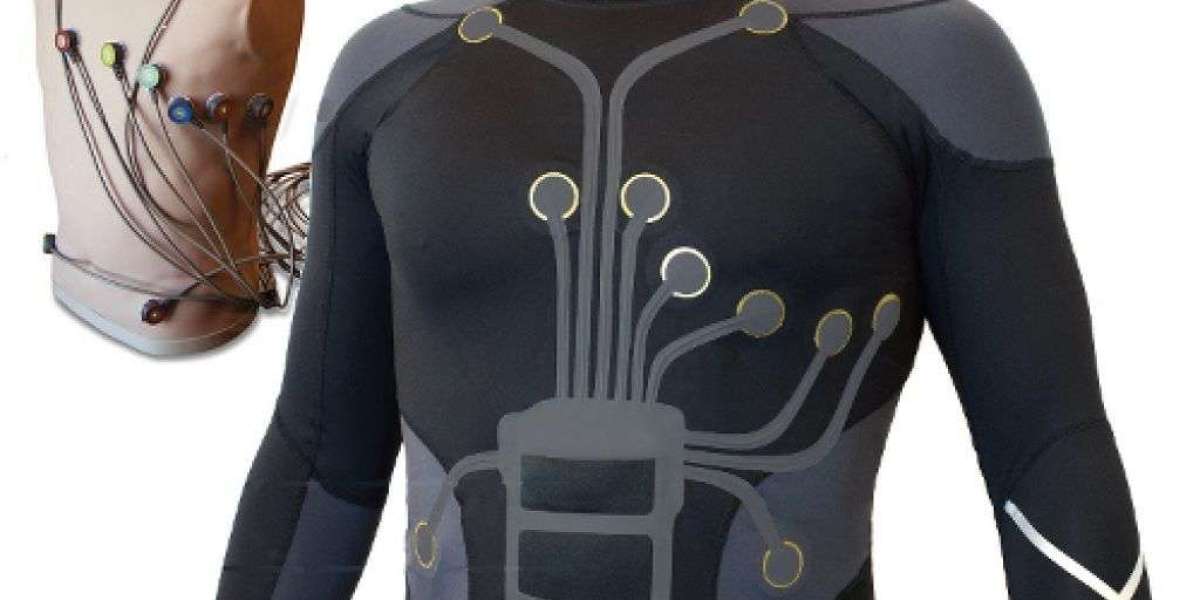The Rise of Medical Smart Textiles: Revolutionizing Healthcare with Wearable Technology
The medical smart textile market is experiencing significant growth, driven by advancements in wearable technology and the increasing demand for proactive healthcare solutions. These innovative textiles integrate sensors, microprocessors, and other electronic components to collect and analyze a wide range of physiological data. This data can be used for various medical applications, from monitoring vital signs to tracking chronic conditions.
One of the most exciting aspects of medical smart textiles is the potential for biosensing textiles. These textiles incorporate biosensors that can continuously monitor vital signs such as heart rate, respiration, and temperature. This real-time data can provide valuable insights into a wearer's health and well-being. For instance, biosensing textiles can be used to detect abnormal heart rhythms, track sleep patterns, or monitor stress levels. This information can empower individuals to make informed lifestyle choices and potentially identify health concerns early on.
Another key application of medical smart textiles is remote patient monitoring. By collecting health data through biosensing capabilities, these textiles can facilitate continuous monitoring of patients outside of a traditional healthcare setting. This is particularly beneficial for individuals with chronic conditions like diabetes or heart disease, allowing healthcare providers to remotely track their health metrics and intervene if necessary. Remote patient monitoring can improve treatment adherence, reduce hospital readmission rates, and ultimately lead to better patient outcomes.
The growth of the medical smart textile market is fueled by several factors, including:
- The aging population: As the global population ages, the demand for innovative solutions to manage chronic conditions is on the rise. Medical smart textiles offer a promising approach to remote monitoring and preventative care.
- Technological advancements: Continuous improvements in miniaturized sensors, data transmission technologies, and battery life are enabling the development of more sophisticated and user-friendly medical smart textiles.
- Growing focus on preventive healthcare: There is a growing shift towards preventive healthcare, with individuals becoming more proactive in managing their health. Medical smart textiles can empower individuals to take control of their health and wellness.
Recent Developments and Investments by Top Companies:
- Schoeller Switzerland: Partnered with a leading healthcare technology company to develop smart textiles for wound healing monitoring (February 2024). This collaboration aims to create textiles that can track healing progress and potential infections, improving wound care management.
- Vista Medical Ltd: Received FDA approval for their new smart sock designed for diabetic foot ulcer prevention (March 2024). This sock utilizes biosensors to monitor pressure and temperature, potentially reducing the risk of diabetic foot ulcers.
- Gentherm: A leading manufacturer of temperature regulation textiles, invested in a startup developing smart clothing for sleep apnea management (January 2024). This technology uses biofeedback to adjust temperature and pressure, potentially improving sleep quality and reducing sleep apnea symptoms.
The medical smart textile market holds immense potential to transform healthcare delivery. By providing continuous health data and facilitating remote patient monitoring, these innovative textiles can empower individuals, improve chronic disease management, and ultimately lead to a more efficient and cost-effective healthcare system.
The Benefits of Medical Smart Textiles: Transforming Patient Care and Monitoring
Medical smart textiles are revolutionizing the way healthcare professionals monitor and manage patient health. These intelligent textiles, woven with advanced sensors and microprocessors, offer a plethora of benefits that are transforming patient care and monitoring.
Enhanced Patient Monitoring: One of the most significant advantages of medical smart textiles is their ability to provide continuous and real-time patient monitoring. Biosensing textiles, for example, can track vital signs like heart rate, respiration, and temperature, providing healthcare professionals with a wealth of data to assess a patient's condition. This continuous monitoring allows for earlier detection of potential health issues and timely intervention, potentially improving patient outcomes.
Remote Patient Monitoring: Medical smart textiles are also facilitating the rise of remote patient monitoring. By collecting health data wirelessly, these textiles allow healthcare providers to monitor patients remotely, eliminating the need for frequent hospital visits. This is particularly beneficial for patients with chronic conditions who require ongoing monitoring but may struggle with frequent travel or in-person appointments. Remote patient monitoring can improve patient comfort and adherence to treatment plans, ultimately leading to better health outcomes.
Improved Chronic Disease Management: Medical smart textiles offer valuable tools for managing chronic conditions like diabetes or heart disease. By continuously tracking vital signs and other health metrics, these textiles can provide healthcare providers with insights into a patient's health status and medication effectiveness. This data can be used to adjust treatment plans as needed, potentially improving disease management and preventing complications.
Enhanced Patient Engagement: Medical smart textiles can also empower patients to take a more active role in their health management. By providing real-time data on their health metrics, these textiles can motivate patients to make healthier lifestyle choices and adhere to treatment plans. This increased engagement can lead to improved patient outcomes and a more holistic approach to healthcare.
The medical smart textile market is on a continuous growth trajectory as the technology evolves and its benefits become increasingly recognized. With the potential to enhance patient monitoring, facilitate remote care, and improve chronic disease management, medical smart textiles are poised to play a significant role in the future of healthcare.
For more information visit at MarketResearchFuture
Other Trending Reports
US Pseudomonas Aeruginosa Treatment Market



